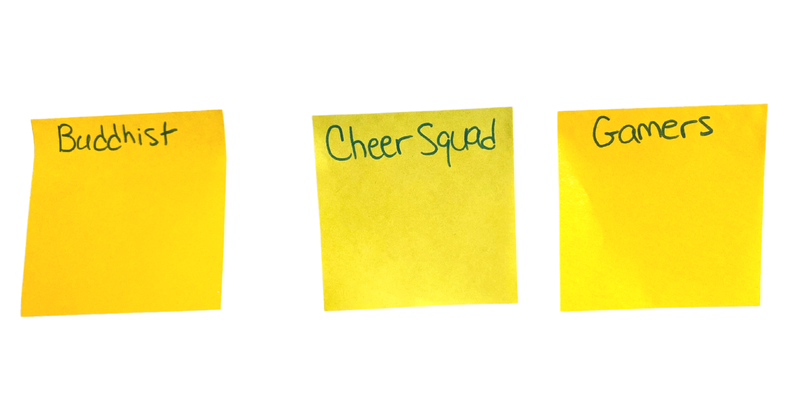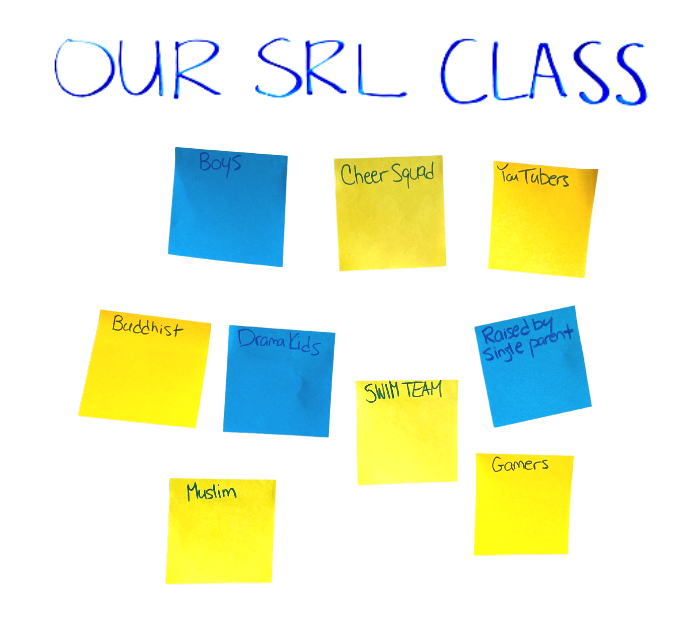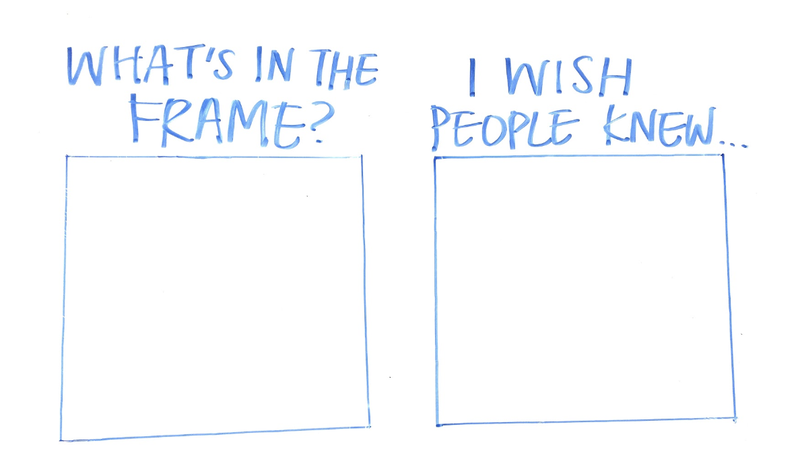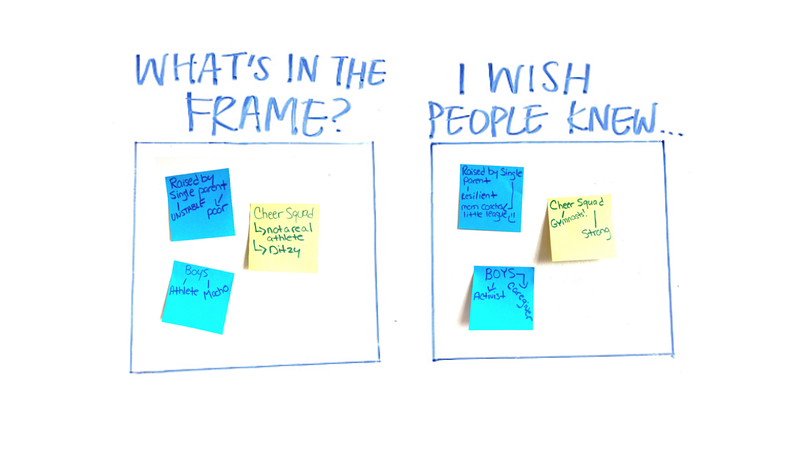Students start to critically think about news media and analyze how media narratives are constructed and the consequences of missing voices.
Students start to become aware of international perspectives, knowledgeable about global issues and become more aware of themselves as global citizens.
Students begin to develop an understanding of how different aspects of communities are covered in the news media. Visually mapping communities that students care about helps them make connections to their own civic identity and understand how different communities see and don’t see each other. Students will also consider the differences between local and national communities they might belong to.
When we take pictures, no matter how we choose to frame our subject, there is always something that gets cropped out or left out of the picture. In news stories, when we talk about framing, or sometimes called The Framing Effect, it’s similar to what happens when we take a snapshot. Storytelling in news media presents a “frame” or window into important events or topics.
Virtual Option: The activity below is meant to be in person, but you can use this Jamboard template to complete it virtually and follow the same steps. Alternatively, you can use other digital whiteboard apps.
What communities do you belong to? Give each participating student 20 post-it notes.
Step 1 - Teacher asks students: What does the term community mean to them? Discuss or write responses on board. From their responses, explain that “community” can mean different things to different people. A common definition is a group of people with a common characteristic or interest living together within a larger society
Step 2 - At the top of individual post-it notes, students write at least three communities they believe they are a part of. Communities may be as general as “Musicians” or “Students” and as specific as “Buddhist” or “Environmental club.” Here, you can also discuss that everyone might belong to a variety of local and national communities.
Example:




Point out to students that everything in the “What I Wish People Knew…” frame includes stories and perspectives that are unique insights from this class. Explain that PBS Newshour is a national television and online news program and that Student Reporting Labs connects thousands of students across the country. Producing a story is an opportunity to give voice to these missing perspectives: if you don’t tell these stories, they won’t get told.
**Recommendation: Keep your post-it notes as potential story ideas in the future.**
Reflection exercise:
What issues do you care most about? This can be used as a follow-up or homework assignment.
Estimated time to complete: 30 Minutes
Step 1 - Teacher asks students: What is an issue? From their responses, follow up by asking: How do news organizations cover issues?
Step 2 - Students fill out this graphic organizer, modeled after the first activity in this lesson, to explore the issues in the news media that they care the most about. These could be current events that impact their families, neighborhoods, states, or country.
Self-reflection is important. Distribute copies of the Exit Ticket for Shifting the Frame.
This resource is part of the Global Education Toolkit and was made possible with support from the Longview Foundation.
Media refers to all electronic or digital means and print or artistic visuals used to transmit messages.
All forms of media created with the purpose of informing the public and delivering news through specific mediums such as radio and broadcast stations, digital news organizations and others.
A subject or problem that people are thinking and talking about
A group of people who live in the same area (such as a city, town, or neighborhood). It can also be a group of people who have the same interests, religion, race, etc.
In news media, when storytelling presents a “frame” or window into important events or topics.
A simplified and standardized conception or image invested with special meaning and held in common by members of a group; a set form or convention
The condition of having or being composed of differing elements. Especially in the context of the inclusion of people of different races, cultures, etc. in a group or organization
The act or practice of including and accommodating people who have historically been excluded (as because of their race, gender, sexuality, or ability)
Awareness of the elements of environment through physical sensation or intuitive cognition. A capacity for comprehension and understanding.
The term “empathy” is used to describe a wide range of experiences. A generally definition is the ability to sense other people’s emotions, coupled with the ability to imagine what someone else might be thinking or feeling. In media-making, creators can have empathy for their subjects and the audience can empathize with the characters.
Students recognize the responsibilities and opportunities for positively contributing to their digital communities. (ISTE)
Students leverage technology to take an active role in choosing, achieving and demonstrating competency in their learning goals, informed by the learning sciences. (ISTE)
Students critically curate a variety of resources using digital tools to construct knowledge, produce creative artifacts and make meaningful learning experiences for themselves and others. (ISTE)
Students use digital tools to broaden their perspectives and enrich their learning by collaborating with others and working effectively in teams locally and globally. (ISTE)
Journalism
Representation
Stereotypes and Misconceptions
Civics
Media Literacy
Lessons
Beginner
Intermediate
Post It Notes
White board, chalkboard or other visual board
Markers
Slides
Online Worksheet
Internet
Projector
50 - 60 Minutes